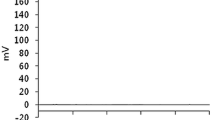Abstract
Self-tanning creams utilize dihydroxyacetone (DHA) as an active agent, to produce a temporary staining of the skin. DHA is a 3-carbon sugar that interacts with the protein-rich stratum corneum to produce melanoidins, which are brown chromophores. Lower concentrations of DHA produce lighter skin-staining, while higher concentrations produce darker skin-staining, resulting in the simulation of a tan for persons of all skin types. DHA is well tolerated, for both internal ingestion and topical application, with the exception of infrequent allergic reaction in some patients. However, self-tanning creams only offer a sun protection factor (SPF) of 3 to 4, with protection at the low end of the visible spectrum and limited ultraviolet A protection. In addition, this SPF is only present for several hours after application of the product, and does not last for the duration of the tan. Self-tanning creams are a method of safely simulating the appearance of a tan without photoprotection. However, other sun protection will be required.
Similar content being viewed by others
References
Maibach H.I., Kligman A.M. Dihydroxyacetone: a sun-tan-simulating agent. Arch Dermatol 1960; 82: 505–507
Wittgenstein E., Berry K.H. Reaction of dihydroxyacetone (DHA) with human skin callus and amino compounds. J Invest Dermatol 1961; 36: 283–286
Meybeck A. A spectroscopic study of the reaction products of dihydroxyacetone with amino acids. J Soc Cosmet Chem 1977; 28: 25–35
Wittgenstein E., Berry K.H. Staining of skin with dihydroxyacetone. Science 1960; 132: 894–895
Kurz T. Formulating effective self-tanners with DHA. Cosmet Toilet 1994; 109 (11): 55–61
Maes D.H., Marenus K.D. Self-tanning products. In: Baran R., Maibach H.I., editors. Cosmetic dermatology. London: Martin Dunitz, 1994: 151–154
Goldman L., Barkoff J., Glaney D., et al. The skin coloring agent dihydroxyacetone. GP 1960; 12: 96–98
Morren M., Dooms-Goossens A., Heidbuchel M., et al. Contact allergy to dihydroxyacetone. Contact Dermatitis 1991; 25: 326–327
Muizzuddin N., Marenus K.D., Maes D.H. UVA and UVB protective effect of melanoids formed with dihydroxyacetone and skin [poster presentation]. 55th Annual Meeting of the American Academy of Dermatology; 1997 Mar; San Francisco (CA)
Johnson J.A., Fusaro R.M. Protection against long ultraviolet radiation: topical browning agents and a new outlook. Dermatologica 1987; 175: 53–57
Author information
Authors and Affiliations
Rights and permissions
About this article
Cite this article
Draelos, Z.D. Self-Tanning Lotions. Am J Clin Dermatol 3, 317–318 (2002). https://doi.org/10.2165/00128071-200203050-00003
Published:
Issue Date:
DOI: https://doi.org/10.2165/00128071-200203050-00003




